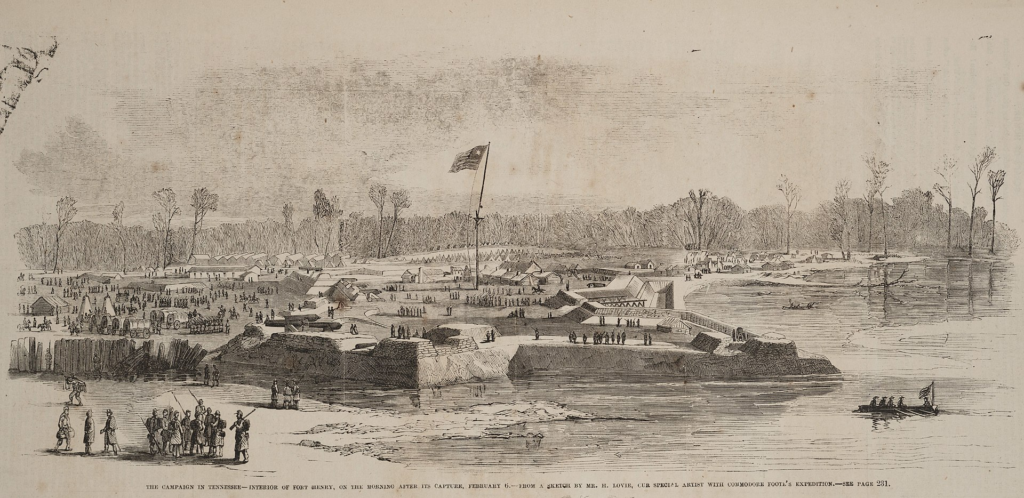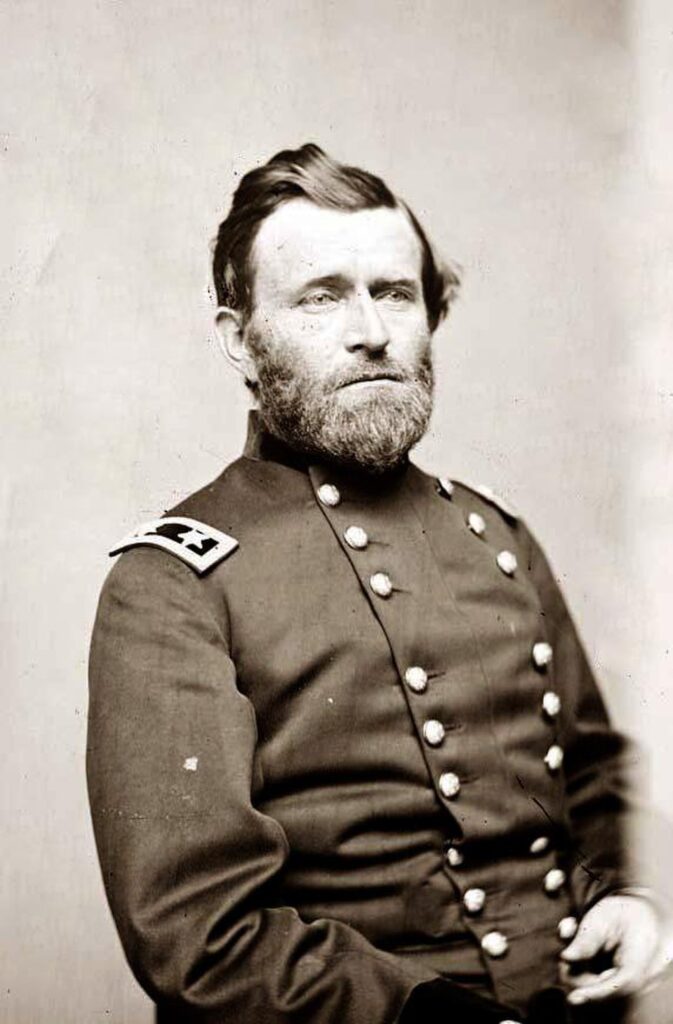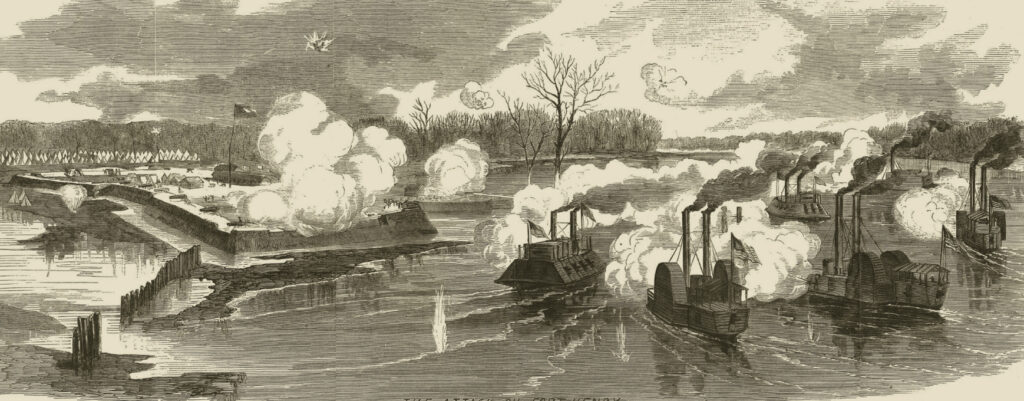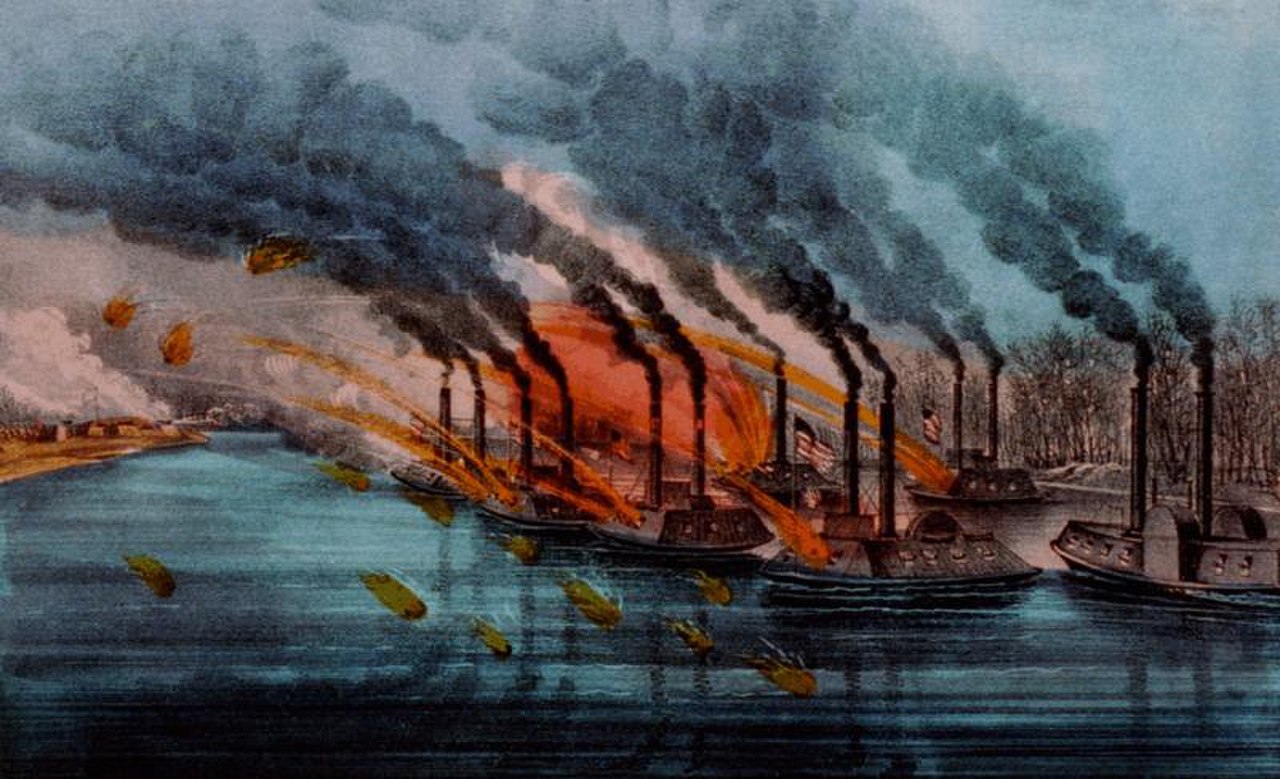When the Civil War broke out in 1861, it started very poorly for the Union Army. Fort Sumter in Charleston Harbor surrendered to the Confederates on April 13. Skirmishes and fights had broken out all over the country, but the major battles like those at Bull Run and Leesburg saw significant Union defeats.

The Confederate Invasion of Kentucky
Throughout 1861, Virginia was pushing the Federal forces out, Missouri’s pro-Confederate State Guard was on the warpath, and the Confederate invasion of Kentucky effectively ended the state’s neutrality. In doing so, it provided the Union Army there, led by Brig. Gen. Ulysses S. Grant had the opportunity to turn its fortune around. The Union cause needed a big win, and Grant delivered it at the February 1862 Battle of Fort Henry, Kentucky.
Grant Delivered Union Victory at the Battle of Fort Henry, Kentucky
The Union’s strategy for defeating the Confederate Army required it to gain control of the Mississippi River, splitting the Confederacy in two and allowing its riverine boats unfettered access to the South for troop movements and naval gun support. Control of the river and its tributaries would enable the Union to move quickly, deep into enemy territory, so even the smaller rivers became essential battlegrounds.
Fort Henry was situated on the mouth of the Tennessee River, the largest tributary of the Ohio River, a primary water source for the Mississippi. The fort sits just inside the Kentucky border, across from Tennessee. While Kentucky had declared its neutrality early in the war, the Confederates invaded anyway, capturing Columbus, Kentucky, on September 3, 1861.
Confederate Brig reinforced the city and its 14,000 defenders. Gen. Gideon Pillow with 140 guns, underwater mines, and a heavy river chain that would prevent the movement of Union gunboats to the South. Controlling the area meant the South lost Kentucky as a buffer zone, but it prevented the Union from moving men and ships deep into the Confederacy, including Mississippi and Alabama, via the Tennessee River.

Since Kentucky had already lost its neutrality, the Union also moved into the area. One of its most aggressive commanders would head for Fort Henry, a man who would become famous for kicking rebels around Ulysses S. Grant.
Grant’s Plan to Get the Union Victory
Grant first captured nearby Paducah, Kentucky, and the transportation hub it had there. The railways allowed the Union to move 15,000 men into the area. He planned to float seven gunboats to Fort Henry to bombard it as the bulk of the Union Army arrived to attack the fort by land.
Within three days of approval of his plan, Grant moved two divisions from Cairo, Illinois, to the Tennessee River. Meanwhile, the Western Gunboat Flotilla under Flag Officer Andrew Hull Foote (the U.S. Navy didn’t have vice admirals until 1864) moved in first. The fort’s 3,400 defenders had 17 guns to defend Fort Henry.
Aside from being outnumbered, the Confederates at Fort Henry had a lot going against them. A downpour of rain had affected its earthwork walls, and the river also rose, submerging all but nine guns and the powder magazine underwater. The rain delayed the advance of Union forces, but since the bulk of the fighting was to be done by the Navy, the Army’s delay actually helped the Union attack.

On February 6, four Union ironclads and three wooden gunboats opened fire on the fort for more than an hour. The Confederates returned fire but could only hit the ironclads where their armor was strongest. The wooden ships were out of range of the fort’s remaining guns. The Confederate commander of Fort Henry, Lloyd Tilghman, fought for 75 minutes, buying time for his retreating men to escape before surrendering to the flotilla.

By the time Grant’s troops arrived, the fighting was over, and Tilghman was a prisoner of war. The Union immediately sent expeditions to destroy other forts in the area and to chase down Confederate ships in missions that penetrated as far south as Muscle Shoals, Alabama. The Confederates were unprepared for an incursion that deep, and the Union raids were a total success.
The capture of the waterways also forced the 17,000 Confederates in Columbus to withdraw from the now-untenable positions, securing Western Kentucky for the Union.
Read About Other Battlefield Chronicles
If you enjoyed learning about the first major Union Victory of the Civil War, we invite you to read about other battlefield chronicles on our blog. You will also find military book reviews, veterans’ service reflections, famous military units and more on the TogetherWeServed.com blog. If you are a veteran, find your military buddies, view historic boot camp photos, build a printable military service plaque, and more on TogetherWeServed.com today.

0 Comments